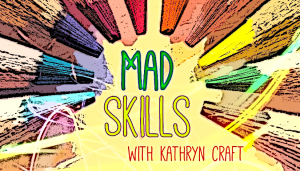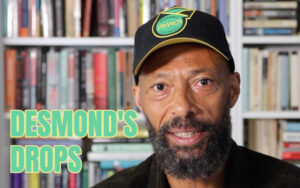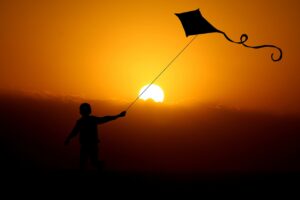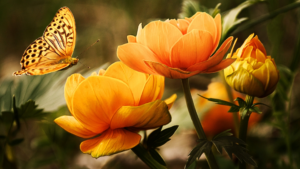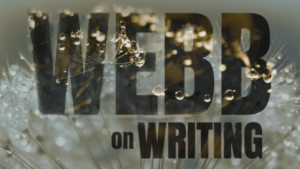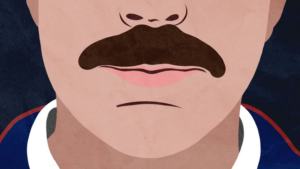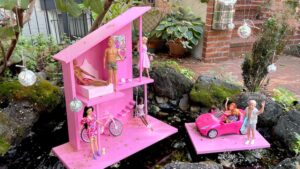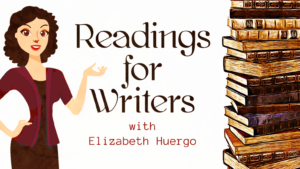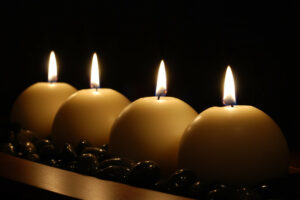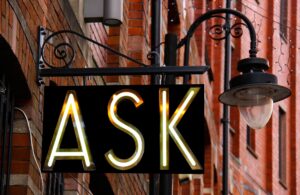Inspirations
Back when I was the editor of a regional lifestyle magazine, I discovered that one of the photographers we worked with had a bachelor’s degree in music and that he had once worked as a professional musician. In her former career, an interior designer who was a consultant for the magazine had been a sought-after portrait photographer. Our creative director, a skilled graphic designer, had a side gig working as a comic book artist.
The writers I worked with were no different. One freelancer was an accomplished painter. Another made jewelry. A writer who was also the author of several books used to knit elegant sweaters and scarves in her spare time. Nearly every creative professional I met at that job seemed to possess talent and inspiration that allowed them to excel at more than one type of imaginative endeavor.
This inclination has also been seen in a number of famous writers. Sylvia Plath created works in oil, pen and ink, and collage. William S. Burroughs was known for his “gunshot” paintings. Lewis Carol was a talented photographer. Throughout his life, Henry Miller created more than two-thousand watercolors. Drawings and paintings made by e.e. cummings were frequently shown at galleries in New York.
Jack Kerouac, Mark Twain, Rudyard Kipling, Kurt Vonnegut, Elizabeth Barret Browning, and George Bernard Shaw were all known for their skills as visual artists.
Although I hadn’t thought about it much before working with a large group of creative people, this predisposition also applies to myself. In addition to writing, I paint with watercolors and sew some of my own clothes. I’m more or less addicted to embroidery.
I’ve found that the creative projects I take on that are not writing-related often help me find solutions when writer’s block strikes. Painting has helped me come up with new story ideas. Learning new creative skills has also helped me write more realistic characters. A pottery class I took last winter with my daughter made it possible for me to better develop a character in the novel I’m working on who is a professional potter.
For years, I’d wondered why so many writers and artists tend to be drawn to more than one type of creative pursuit, and why engaging in more than one kind of imaginative project seems to boost one’s overall creative abilities. The answer has to do with the way creative thinking works in the brain.
In a 1997 interview with Wired magazine, Steve Jobs, co-founder and former CEO of Apple, said that “Creativity is just connecting things.” It turns out that he was right.
In their 2015 book, Wired to Create, authors Scott Barry Kaufman and Carolyn Gregoire write that creativity is a complex process that requires the interaction and collaboration of multiple parts of the brain, some of which don’t typically work cooperatively in the brains of non-creative people.
According to Kaufman and Gregoire, in order to write a story or compose a concerto, the brain must work to engage and connect memories, physical motor skills, emotions, critical thinking skills, imagination, analytical aptitude, empathy, planning skills, and the ability to sort and ignore irrelevant information, among other cognitive processes.
The science behind […]
Read MoreWhen a beekeeper opens a hive, an intense moment of sensory magic follows. Bees rise from the hive and saturate the air with a gentle, but penetrating hum. Imagine being surrounded by a powerful Om that seems to come from inside your own head as the vibrations resonate in the tiny bones in your ears.
A warm, humid aroma of honey and beeswax fills your sinuses.
As a backyard beekeeper, I always looked forward to that Zen-like moment of calm. I approached my hives with giddiness, anxious for the contact high of being among the bees.
Several years ago, on a perfect August day, I went out to check on my hive. Something felt off. The air was too still. Ordinarily, dozens of bees would have been flying in and out of the hive, the foragers returning home loaded down with bright yellow pollen stuffed into the pollen baskets on their rear legs.
But that day, the hive was eerily quiet.
My heart rate ratcheted up as I got closer. I think my body understood before my brain did. Then I saw it. Outside the hive lay a pile of 40,000 honey bees. My bees, all of them dead.
I built that box hive with my own hands. I had studied and worked hard to care for these creatures. Thoughts raced through my mind. What had I done wrong?
It couldn’t have been Colony Collapse Disorder, a mysterious syndrome in which bees fly off and never return. My bees came home.
It couldn’t have been a parasite, a fungal, bacterial, or viral infection, because an infection would have taken time to work through the hive. My bees died in a pile. All at once. In my yard.
I soon realized the bees had been poisoned by one of my neighbors who applied a toxic lawn chemical. At first, I was furious. I had no idea who had used the lawn product so I looked at all my neighbors with suspicion. Was it YOU?
After a few days of side-eyeing everyone on my street and scrutinizing their impeccably manicured lawns, I came to realize the problem wasn’t that someone used a toxic chemical on their lawn. The problem was that these chemicals were legal and widely available. Although most other countries have outlawed these toxins, our government refuses to stand between landowners and their perfect green lawns.
As I stared at my silent hive and the pile of corpses, I wondered what was happening to the native pollinators. To the wild bees, the butterflies, wasps, and yellowjackets. Were they dying too?
What if they all died?
What if all our pollinators died?
That what-if question haunted me. What would our world look like without pollinators? What would happen to our agricultural system? Our food security? How would it impact our economy? Global politics? One-third of the food humans consume is the result of pollinators. If we lost a third of the food in a world that already struggles with food insecurity, who would claim the remaining food? Who would go hungry? How would it exacerbate the existing inequalities in the world? Would the economy survive? Would nations go to war?
These questions kept me up at night. What if? What if? What if?
As these questions buzzed around in my head, a story idea crystallized about […]
Read MoreMy youngest left for college this month and we are officially empty nesters. It’s a crazy time, both exciting and bittersweet. I wander around the house, peeking in empty bedrooms, folding shirts just so I can smell them, wondering how a home that a few weeks ago felt so loud and overcrowded can suddenly be so quiet.
My writing is quiet too. I stare at the page, waiting for the words to come, but they are hiding just out of reach. I can almost see them, shimmering in the space in front of me, dreamlike and perfect in a way they never stay when I capture them.
But for now the page, like my house, is still.
A friend called me last night to check in. She asked how I was doing, reminded me it was ok to mourn, for a little bit, the end of this stage of life that has been my focus for 22 years. Reminded me too that people had been in my space, both physical and mental, for a very long time, and it would take some readjusting to get used to the change.
“Don’t think of it as empty,” she said. “Think of it as waiting to be filled with new adventures and things you love.”
A tiny shift, yet it helped, both for life and for writing. Until I can catch and keep those shimmery words that dance beyond my grasp, how do I want to curate my mental space? And what adventures do I want to have on the page when the words return?
After my friend’s call, I made a list. Two lists, actually. A life list, and a writing list, both full of ideas and adventures to look forward to and to stretch me. I’m sharing the writing list here.
Read MoreWelcome to a new edition of Desmond’s Drops!
This month, enjoy three drops focused on one topic–Robert McKee’s concept re: “The Limits of Human Experience.” How can you push your characters to their absolute limits? Learn more about a technique that McKee himself has said is underutilized–and that can make your story much stronger.
Email subscribers, please click directly to staging-writerunboxed.kinsta.cloud to view, or visit all of Demond’s Drops on YouTube.
Look for more of Desmond’s Drops in November!
Have your own bit of wisdom to share? Drop it in comments.
Read MoreThe first traditionally published book I wrote happened in small increments of time. Ten minutes here. Fifteen minutes there. If I was really lucky, I could snag a whole half-hour to myself.
That’s what it felt like: snagging moments as they flew by.
At the time I had a newborn, twin three-year-olds, a five-year-old, a six-year-old, and an eight-year-old and I worked a full-time job. Time was a construct of the imagination. I could barely boil tea or brush my hair or visit the bathroom without a sweet little boy calling for Mama.
But I had a story threatening to burst me.
So while my children bathed, watched by their father, I shut my bedroom door, set a timer for ten minutes, and wrote furiously, words splitting out of me.
It was not a pretty story when it was all said and done. But it was a story. The bones. And I had a feeling they were good. And that meant I could turn them into something better.
I tell you all this to say it’s possible to write a book in ten or fifteen minutes a day. Sure, it may take us a year or two to get that first draft down, but the important thing is—it’s a draft. It’s something we can work with. And words on a page are better than words trapped in our brain, clamoring to get out. (Ironically, the voice begging me to write this story belonged to another boy, as if I didn’t have enough of those asking for things!)
Not many of us have hours at our disposal to write on our works-in-progress. We have full-time jobs or family demands or life crises to manage. If we wait until we have hours at our disposal to write on our work-in-progress, we’ll never actually make progress. We might as well call it a work-in-stagnation. Or an idea.
So how do we use those small pockets of time available to us? And where can we find them?
First, let’s start with where to find them. I have three suggestions—but I bet you can come up with more.
1. Use commute time to write.
I have several friends who use dictation while walking their dogs, driving places, or traveling. If you find it too hard to actually write scenes or sentences that make you proud to be a writer, try outlining a scene or creating a character or dictating descriptions of places or people you see. All that can be used later.
2. Trade social media time for writing time.
Many of us spend much more time scrolling through social media than we even realize. Schedule the time you’ll spend on those platforms, instead of letting them suck you in indefinitely. Put limits on your devices. Enlist a friend or partner to hold you accountable. Take back the time and write.
3. Use your lunch breaks.
I’m all for mindful eating, but sometimes you have to take that ten or fifteen minutes where you can. Eat while writing. Or wait until you’re done eating. Close your office door (if you have one) or hide behind some earbuds and write.
Be creative in looking for other pockets of time.
Now, how can we use those ten or fifteen minutes so they yield what we’re looking for: words, progress, and brilliance (maybe)?
Set a timer […]
Read More
Three years ago, in mid-August, my first historical novel debuted in the summer of lockdown. The launch situation was far from ideal, and those of us who were published that summer did the best we could with bookshops closed and no in-person events. When August 2021 rolled around and my second novel was released along with the paperback version of the first, my expectations weren’t high. Another eerily quiet summer, another novel comes out into the world with a whisper.
The summers of 2020, ‘21, and ‘22 were all about book release and promotion, so there was some structure to my writing/author life. It’s late August 2023 as I write this. Things are better now for publishing authors, and though I don’t have a novel in the pipeline, through two launches I’ve developed a community of fellow writers and supportive readers. I’m celebrating friends’ book launches and live events, and sometimes speaking, mentoring, and teaching.
While my first two novels were coming out into the world, I found it tough to begin a new draft. Here, I should qualify that when my manuscript sold in a two-book deal, I had a completed draft of the second and it was a stand-alone sequel. I have real admiration for authors who crank out a book a year. While promoting a recently published book, I needed to keep that set of characters fresh in my head so I could talk about them when questions were asked (even though all authors answer the same questions multiple times). We hone our sound bites, quips, our interjections of humor, and (especially with historical fiction) we can recall historical dates and events at the drop of a hat. It’s tricky, when you’re interviewed for 45 seconds on live radio and the DJ poses questions like: So, who stars in the movie? The clock is ticking while you hem and haw, trying to remember the names of any under-thirty actors. So I was reluctant to try to bring a new set of characters to life. Plus, the pandemic sucked the creativity from my soul for a while.
For the past year, I’ve been working on a third manuscript on and off. The most recent (fifth) draft is, at present, with an editor. So there’s that waiting-to-hear-comments time, which I am now really good at enduring, as well as the sense of relief that comes with completing specific goals. The fine-tuning of this novel has been slow going, and that’s fine. There’s no deadline. I’m surprised by how nice I’ve been about it—to myself, I mean. I’ve felt fortunate that I’ve been able to move at my own pace with this project. While I work well under the pressure of a deadline, I know now that I couldn’t have written this book in one year. The story needed time to germinate and develop. I like to leave room for historical research to shape my plot, and for my characters to surprise me. Don’t get me wrong, I do still feel a strong drive to get this novel to the finish line. I’ve learned—with no deadline—what my own writing process is, and also, that I need to trust it. That’s worth something, isn’t it?
When asked to choose, I’ve considered myself a hybrid Plotter/Pantser. […]
Read MoreAm I showing a freakish side to my personality by admitting that I believe in signs? Probably, but really, aren’t writers considered a little kooky? Yeah. We look for meaning where there is none—and then create some. We opt for fiction to make our story believable when the facts are just too weird. We craft imaginary people and put them through the most ridiculously difficult things on the page to elicit emotion from our readers. And some of us look for signs, or perhaps a better way to say it is, we’re open enough to our surrounding world to find answers we’re seeking.
Searching for Answers
When I first started writing, I dreamed about a real-life person for two weeks before I decided to grab a biography and look them up. She became the subject of my first novel. While deciding what to write about for my next book, I was traveling out of town to a writer’s conference and ended up walking into two different establishments with faux statues of Rodin’s Thinker. In the airport on my return, I headed to the baggage claim and saw that it was backlit by several large screens that flashed ads. The screen above my waiting luggage was stuck—on an image of Rodin’s Thinker. I laughed aloud and said to no one in particular, okay, okay. YES. I will write that book. It may seem silly, but I listen to an idea that presents itself to me, in whatever way it comes.
There’s another really magical thing happens to me sometimes. I’m in the midst of a work-in-progress and there’s a particular aspect I’m stewing over. I can’t seem to nail down the direction I’d like to take. I hem and haw for days or weeks, or months, and in the meantime, I do what I always do. Ponder, explore, discard. And I read. One day, I’m minding my own business and reach for a book that I’ve had on my shelf for ages but haven’t yet read. Undoubtedly, it’s something I’ve wanted to get to and have told myself I’d circle back to a million times. (So many books, so little time, amiright) But suddenly this book is the only book I see, as if I’m drawn in by its gravity.
This is where the magic comes in. I read the novel and suddenly, the answer to my craft question in my WIP is right there, in this book that has been on the backburner for no specific reason–and it holds the key! It demonstrates the kind of structure I need to use, or an emotional thread I’m trying to develop, or insight into a character that mirrors the one I’m hoping to capture on the page. Next thing you know, I’m covered with goosebumps and I absolutely marvel in that magic. This has happened to me so often, that I almost wonder if I am subconsciously buying books that I somehow know I need, later.
It also makes me wonder how any writer can say they don’t have time to read. To read is to expand your skills in a very real way. It’s the fundamental core of your writing. To read is to open a pathway into the beating heart of your own work. […]
Read MoreBorn as: Sinéad Marie Bernadette O’Connor
By way of: The Universe Inside You (& Me)
Dear Sinéad,
I hope you don’t mind me calling you by the name I’ve always known you by. I doubt you’ll remember me, but we were actually friends once. That is, if Facebook friendship counts. Yep, back in 2009 (I think), when I first joined the platform, I was so clueless that I actually sent you a friend request. Astonishingly, you accepted! You were among my first friends there, and were kind enough to respond to my missives on several occasions. Then again, who here on this plain can know? Maybe remembering is an obsolete concept to you now.
Whether or not you remember, I’ll remind you that I’ve been a huge fan since the first album. My admiration for you as an artist has only ever grown. I want you to know that I don’t ordinarily do this—write letters to those beyond the veil. I hope you take it as the compliment intended when I tell you that I’ve only written one other, to Professor Tolkien—my first inspiration, and the wellspring of my chosen literary genre.
I’ve been thinking about you a lot lately, and I thought it might help me to make peace with your passing to write you and let you know why you continue to mean so much to me. I recently watched the documentary, Nothing Compares, and I’m glad it was made before your passing. It was wonderful to hear your voice during this retrospective on your remarkable artistic journey. It feels different than a posthumous tribute–less fawning and pretentious–which seems fitting for someone like you. I’m going to encourage everyone who’s interested in living an artist’s life to watch it.
If I’m going to address things I admire, and that inspired me, I have to start with your fearlessness. I mean, damn girl—talk about speaking your truth and never faltering. Heck, you were cancelled before being cancelled was a thing. Shortly after the incident on SNL, when you got on the stage at Madison Square Garden and were booed, not only did you stand up to it, you switched from the soft song you were going to sing to belt out a Bob Marley anti-racism song, just to make sure you were heard over those who sought to drown out your voice. Talk about a badass! What were you, 23 at the time? It had to sting. Most would’ve fled the stage, I’m guessing myself included. But you simply considered it the price of staying true to yourself and carried on. Years later you said you never regretted it. You didn’t give a damn about the fame and the money that it might have cost you. You cared about the message and the art and the conversation it incited. You cared about the people who’d been harmed. You cared about the truth.
Which brings me to your perseverance and adaptability. As you surely realize, you never had another top 40 hit in the US afterward. But, oh, how you endured. You always insisted that you never wanted to be a pop star. […]
Read MoreThe Apple TV show Ted Lasso has been mentioned here before, most notably in this post by former WU regular Bill Ferris, who spotlighted the show two years ago. But staying true to my lifelong habit of being woefully behind the times (I still haven’t gotten around to seeing that new Kevin Costner movie, Dances with Wolves), I was late to the party in joining the sizable fandom of All Things Lasso.
I’d been hearing about Ted Lasso for a while, but had been dragging my feet about checking the show out. For one thing, it appeared to be about sports. I not only don’t care about sports; I actively dislike them – a holdover from my teenage days when I resented all the attention that high school athletes received, while musicians and other artists were largely ignored. (Yes, I am an attention slut – why do you ask?) It also sounded like a pretty goofy fish-out-of-water premise: an American college football coach who suddenly finds himself transported across the Atlantic to coach a professional English soccer team. So it seemed the level of suspension of disbelief the show would require was already taking this into shark-jumping territory. And then there was that ridiculous ’70s pornstar mustache I kept seeing in photos of the titular character. No, this clearly did NOT look like AKVF (Acceptable Keith Viewing Fare).
I also didn’t like the idea that I’d need to subscribe to yet another streaming platform to watch this show. I’m already shelling out money to Amazon, Netflix, Paramount, Disney, and maybe a couple more. But I couldn’t find any other way to watch this show without subscribing to Apple TV. So I grudgingly signed up for one month, figuring I could quickly tell whether this show was worth continuing my subscription.
Okay, I have to admit: Within an episode or two, I was hooked. I went on to binge-watch all the older episodes, and then began viewing what would turn out to be its final season in real time, sometimes waiting an entire excruciating week between episodes (surely one of the most relatable first-world problems of our day). I thoroughly enjoyed the entire series, and was struck by what a unique experience I had in watching this show, so today I thought I’d explore my Love of the Lasso. Okay, that sounds like a pulp fiction paperback title that could have a VERY dodgy cover, so let’s move on and take a look at why this show stood out for me.
NOTE: I’ve attempted to avoid any spoilers, but I will allude to some of the long-reaching themes and concepts the show explores.
First of all, it’s so gosh-darn different.
One of the few upsides of the pandemic – besides allowing many people to work corporate jobs barefoot and in gym shorts – was the quality of streaming TV shows that emerged. But, perhaps not surprisingly, many of those shows explored some VERY dark themes. Ted Lasso stands out among them for having an unapologetically upbeat main character, who is bound and determined to share his own folksy (and okay, often seemingly corny) philosophy with everybody he encounters. As the series progresses, we learn that Ted’s life is not all sunshine and rainbows, but […]
Read MoreThis past weekend I did something unusual, at least for me. Though given the blockbuster audience numbers, it was a rather typical decision. That is, I saw both Barbie and Oppenheimer on the big screen, diving headfirst into the summer cultural phenomenon known as Barbenheimer.
I don’t quite know what possessed me. It has been years, certainly pre-pandemic, since I attended an opening weekend premier, much less two. It may have been the surreal opposites the two projects represent. Perhaps the memes drew me in, or the appeal of a cool, dark cinema on a blistering summer day. Or maybe it was simply the call of story, the promise of two fresh visions to pique my interest and awaken my senses.
And wow, did they deliver! From the explosion of color in Barbie to the heart-shattering explosion at the center of Oppenheimer, both were the culmination of bold visions brilliantly executed. The films captivated, cajoled, and touched me, leaving my emotions a maelstrom in their wake. Shakespearean scholars would be pleased at the catharsis I experienced.
But here’s the thing. For all the massive sets, sweeping vistas, splashy dance numbers, and stellar casts, it was – as it always is – the root stories that transformed both from interesting premises to works of art.
In the days since, I’ve been pondering just why the writing touched me so. It wasn’t the plots. They were fine, of course, hitting all the marks. Oppenheimer had a few twists and a slow burn culminating in a searing finale. Barbie was satisfying too, though a bit predictable. Yet I was still moved from laughter to tears by the end. So, what was it? What sparked the magic?
The more I reflected, a key similarity between these two seemingly incompatible endeavors jumped out. In both cases, writers found the broader stories swirling around the main plot line – crucial cultural, social, and political currents – and employed them to shape not only events within the tale but also the emotional life of the characters. The alchemy was how they so deftly integrated these elements that they became indispensable to the tale.
How did they do it, and what lessons can we learn to elevate our own tales? Let’s take a peek at how both incorporated the larger story swirling around the main plot.
<spoiler warning – please do not proceed if you have a movie date on the near horizon>
Embedding the Big Issue within the Protagonist’s Journey
Oppenheimer anchors its epic story with a quote from Hindu scripture that the scientist once used himself when reflecting upon his dubious achievement – “Now I am become Death, the destroyer of worlds.” The line is spoken twice, once in a scene of personal passion and again at the moment civilization changes forever. And while the story winds in many directions, brimming with plots, subplots and more than a little subterfuge, the heart of Oppenheimer the man is weighted with the burden reflected in the evocative meditation. For it was his vision, intellect and leadership that birthed the nuclear age that shapes our modern world and yet might still destroy it; and he carries that burden with him. It struck me afterward that the story structure is like a distorted mirror. The events […]
Read MoreI once heard the comedian Trevor Noah describe the daily news as a yoking of terror and joy. A meteor, he quipped, is hurtling toward earth, and it’s shaped like a penis. Noah captures brilliantly the conundrum of our times: Should we cry or should we laugh? This summer the movie box office captures that same mix of horror (“Oppenheimer”) and glee (“Barbie”). Nuclear annihilation or flat arches? Even the pile of books stacked near my bed offers extremes: nonfiction essays about the end of a climate that can sustain human life, or a novel about a woman who starts again at mid-life.
While there are a number of authors writing about the environment, Elizabeth Kolbert remains my absolute favorite. She doesn’t simply write about the environmental sciences. She doesn’t simply report on climate change. She tells us a story that compels us to slow down and listen. Take Field Notes from a Catastrophe: Man, Nature, and Climate Change, for example, which was originally published in 2006 and then revised and published again in 2015. “Field notes” suggests a random collection of observations. Yet what Kolbert achieves here is a hybrid form, scientific reportage that also works like a collection of carefully woven short stories about our relationship, as a species, to the world around us.
“The Darkening Sea,” one of the chapters in Field Notes, is the story of how scientists came to understand something they never thought possible, in Kolbert’s words, “the chemistry of an entire ocean changing.” The heroes are the scientists who are trying to save some of the tiniest aquatic organisms, pteropods, one of many marine species that wear their skeletons on the outside of their bodies. As the world’s oceans absorb more and more CO2, they are losing their alkalinity. The pteropods’ skeletons are dissolving, and the sea is darkening. Will the scientists save the pteropods? Will our heroes defeat the culprit who, in Kolbert’s words, “set in motion change on a geologic scale”?
Kolbert describes Under a White Sky: The Nature of the Future, published in 2021, as “a book about people trying to solve problems created by people trying to solve problems.” Turns out we are the villain and the hero. We don’t know whether to cry or laugh. We certainly don’t seem willing to transform the greed that has driven us to this point into altruism, stewardship, obligation. In Under a White Sky, Kolbert interviews a panoply of experts, all of them, as she notes, genuinely hopeful about their work. They were less hopeful about politics. Geoengineers can shoot pellets into the atmosphere to deflect the sun’s rays, changing blue sky to white, and cooling down rising temperatures. Politicians will decide who lives under a white sky and why.
Reading Kolbert’s work, including The Sixth Extinction: An Unnatural History, for which she earned the Pulitzer in 2015, I recall Coleridge’s ancient mariner, a figure enlightened and thus compelled to tell the same story to anyone willing to listen. Obviously, Kolbert’s genre is nonfiction. That said, it is difficult to ignore the dramatic arc of her essays, the distillation of her interviewees into characters, and the thematic focus on the human species, sublime and ridiculous, standing at a […]
Read More
A few months ago, I joined a Pilates studio. An odd choice given that my elementary school gym teacher once accused me of not trying when my fingertips stopped at knee level during an attempt to reach down and touch my toes. The only thing worse than my flexibility is my balance.
My last plié was executed in 1978 with all the grace of a drunk hippo. Repeating the performance in 2023 while standing atop a Bosu ball might have made me question my life choices if I weren’t grappling with the even greater challenge of following verbal instructions for an hour. Processing and implementing what’s being said forces the 562 open tabs in my mind to shut down.
It’s meditation for the ADHD brain. A system reboot that I can schedule and replicate at will.
There’s a ritual to Pilates that I find soothing even when the music is loud or my hamstrings scream for mercy. Bridging always comes after footwork. Leg straps always come right before final rolldown. I can now often anticipate how one movement will flow into the next. Nothing is expected of me beyond doing what I’m told. I now understand why my older daughter, back in her dancing days, found repetitive barre exercises relaxing.
My anxiety level has plummeted, and I now realize how much I miss the rituals that once helped my creative process. I composed my last novel while seated in a Morris chair built the same year in which my book was set. A candle burned beside me, some timeless, nature-y scent like sweetgrass and sage. I drank tea out of a mug bearing the old Roycroft logo and kept my cell phone on the opposite side of the house to prevent 21st century distractions. If words didn’t flow I’d twirl my great-grandfather’s old paintbrush between my fingers.
On some level I must have understood that those rituals were novel specific because I drifted away from all of them when I started my current WIP. I inadvertently hobbled myself by not coming up with new ones to combat the sensory overload of living in a world on the brink of collapse. Balance, serenity, and the ability to fully escape into story have never been more important, but for many of us hyper-empathetic folks, new strategies to get there might be in order.
A step-by-step guide for finding your personal writing rituals
First, choose your setting carefully
I mean YOUR setting, not the novel’s. Close your eyes and picture your ideal writing environment, not necessarily the one you currently have. Would you work in the same place every day or change it up? Use a computer or old-fashioned pen and paper? Recliner, office chair, or standing? If you work at a desk or table, would this be in a room with other people around or alone behind a closed door? How much work space do you need to keep everything you want close at hand? Do you prefer minimalism, organized clutter, or outright chaos? Would you face a window or a wall?
Give yourself as many of these things as you possibly can.
Second, TLC for your senses – ALL your senses
Visual
Read More
Please welcome guest Jennifer L. Gatewood (aka Jennifer Bohmueller) to Writer Unboxed today! Jennifer had the thought to share some of the lessons learned since she’s become agented–she is now represented by Lori Galvin at Aevitas Creative Management–and we knew from experience those lessons would be many. Jennifer, who reports that she is “currently writing a domestic suspense novel while plotting others,” has a degree in journalism and works as a communications consultant and freelance writer. Her short stories have been published online and in print. When she’s not writing or reading, she’s traveling or hiking.
You can follow Jennifer on Threads or Twitter or check out her website at www.jennifergatewood.com
It’s only been a few months, but there’s so much I’ve learned since signing with my agent last fall. So much so that, ironically, I feel I could write a book about it. Maybe one day I will. But until then, here are the top five lessons I learned after signing with my agent.
1. Writing is solitary, but you don’t have to do it alone. During one of my first calls with my agent, I asked her if she had any advice for me. She stressed I should find other writer friends. I didn’t know what a lifesaver this piece of advice would be. I soon learned how important it was to have cheerleaders, confidants, and an understanding ear in my corner. I wasn’t prepared for the rollercoaster of emotions during the process—feeling like I had written the next Pulitzer Prize piece of literature and then feeling like everything I wrote was a big stinking pile of trash. I experienced a severe bout of Imposter Syndrome right after I received my first round of constructive feedback from my agent. (I talk about overcoming Imposter Syndrome on The PPS Club Podcast.) If I didn’t have my writer friends cheering me on, I have no doubt I would have shelved my novel and gone back to my day job.
2. You’ll need to level-up on feedback. I had no idea I would get feedback about my manuscript. I thought once an agent signed you, then you had made it. Surely the next step was a hefty contract with one of the big publishing houses and on to the New York Times Best Sellers list. I giggle-snort at how naïve I was. It was a wake-up call when my agent mentioned what wasn’t working with my novel and why it wasn’t quite ready to go out on submission. It was then I realized I needed to be very receptive to feedback. Not just from my agent, but from beta readers and critique partners. I’m not in any way recommending that you nod and go along with any and all feedback. You are still the author and know your characters and their story best. Writers often get nervous talking about the revision stage, and voice concern that their book will change. My book has changed for sure based on feedback I’ve received. However, I strongly believe it’s changed for the better—it’s more focused, has a stronger plot and characters, a better ending, and the […]
Read More

